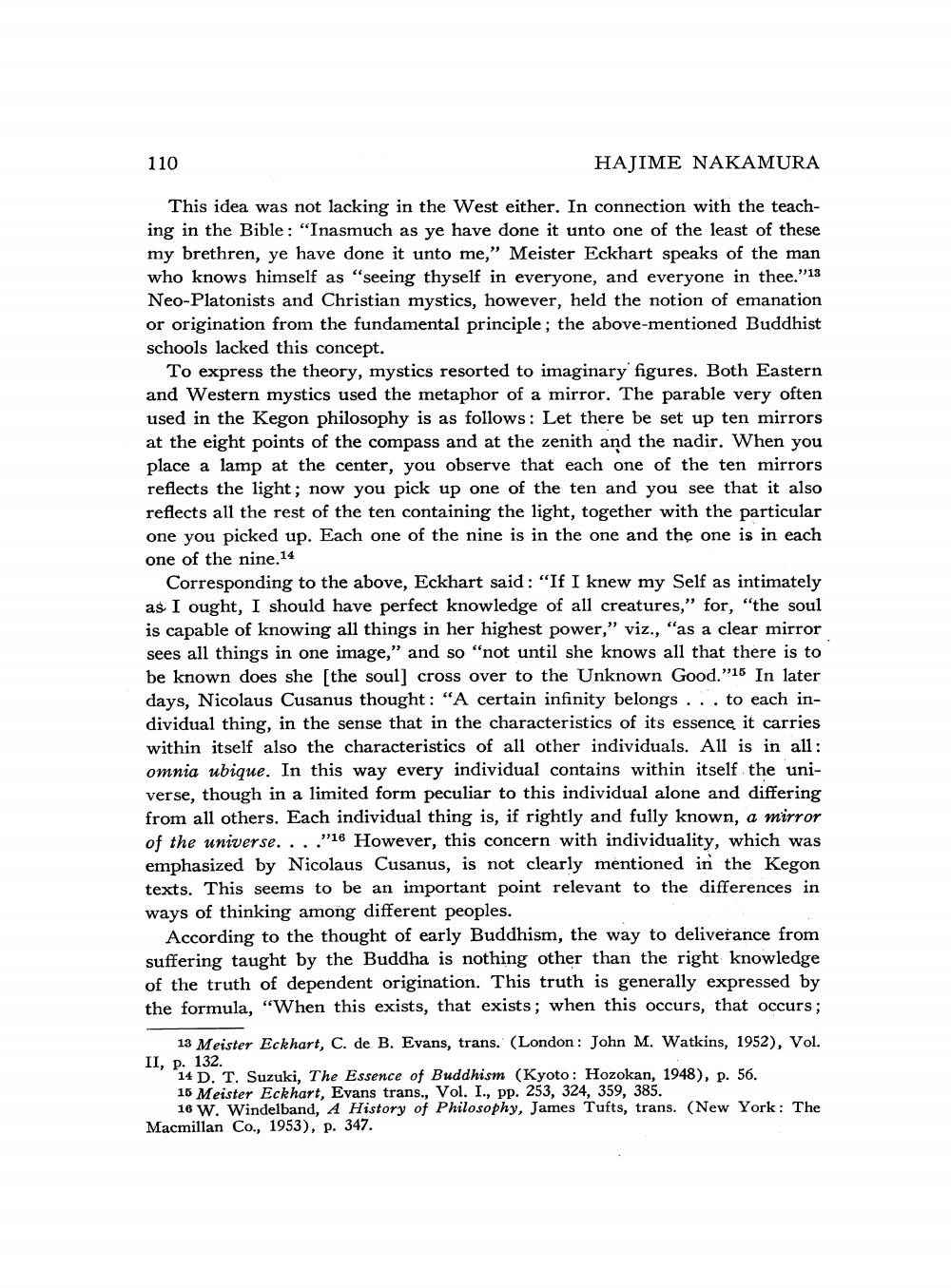________________
110
HAJIME NAKAMURA
This idea was not lacking in the West either. In connection with the teaching in the Bible: "Inasmuch as ye have done it unto one of the least of these my brethren, ye have done it unto me,” Meister Eckhart speaks of the man who knows himself as "seeing thyself in everyone, and everyone in thee."'13 Neo-Platonists and Christian mystics, however, held the notion of emanation or origination from the fundamental principle; the above-mentioned Buddhist schools lacked this concept.
To express the theory, mystics resorted to imaginary figures. Both Eastern and Western mystics used the metaphor of a mirror. The parable very often used in the Kegon philosophy is as follows: Let there be set up ten mirrors at the eight points of the compass and at the zenith and the nadir. When you place a lamp at the center, you observe that each one of the ten mirrors reflects the light; now you pick up one of the ten and you see that it also reflects all the rest of the ten containing the light, together with the particular one you picked up. Each one of the nine is in the one and the one is in each one of the nine. 14
Corresponding to the above, Eckhart said: "If I knew my Self as intimately as I ought, I should have perfect knowledge of all creatures," for, "the soul is capable of knowing all things in her highest power,” viz., "as a clear mirror sees all things in one image," and so "not until she knows all that there is to be known does she [the soul] cross over to the Unknown Good."15 In later days, Nicolaus Cusanus thought : "A certain infinity belongs ... to each individual thing, in the sense that in the characteristics of its essence it carries within itself also the characteristics of all other individuals. All is in all: omnia ubique. In this way every individual contains within itself the universe, though in a limited form peculiar to this individual alone and differing from all others. Each individual thing is, if rightly and fully known, a mirror of the universe. . . ."16 However, this concern with individuality, which was emphasized by Nicolaus Cusanus, is not clearly mentioned in the Kegon texts. This seems to be an important point relevant to the differences in ways of thinking among different peoples.
According to the thought of early Buddhism, the way to deliverance from suffering taught by the Buddha is nothing other than the right knowledge of the truth of dependent origination. This truth is generally expressed by the formula, "When this exists, that exists; when this occurs, that occurs;
13 Meister Eckhart, C. de B. Evans, trans. (London: John M. Watkins, 1952), Vol. II, p. 132.
14 D. T. Suzuki, The Essence of Buddhism (Kyoto: Hozokan, 1948), p. 56. 15 Meister Eckhart, Evans trans., Vol. I., pp. 253, 324, 359, 385.
16 W. Windelband, A History of Philosophy, James Tufts, trans. (New York: The Macmillan Co., 1953), p. 347.




